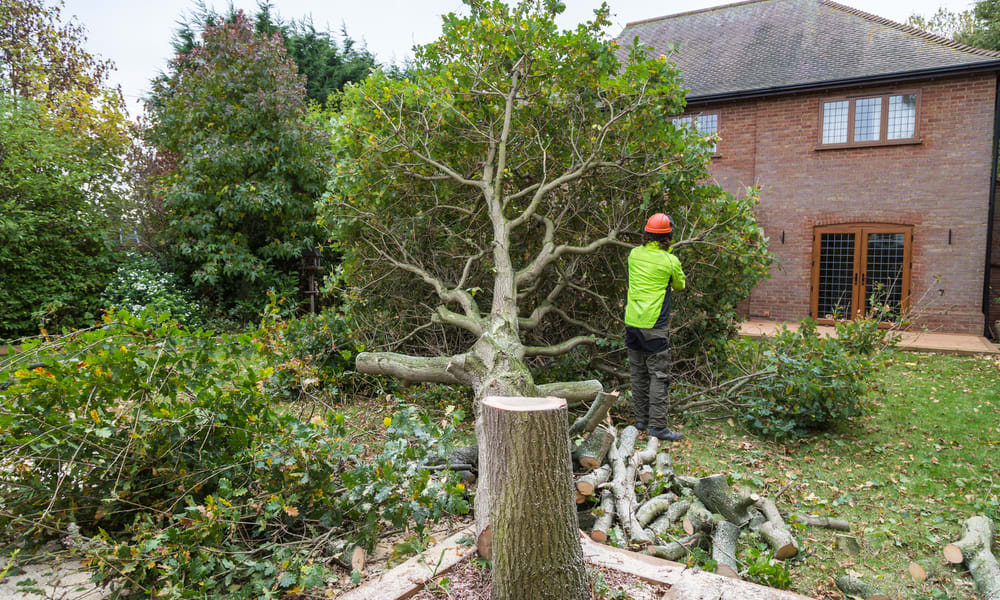Tree Removal Costs: What You Need to Know
Tree removal serves critical functions ranging from safety to aesthetic enhancement, yet its costs can vary widely due to factors like tree size, species, and location. Understanding local rates, seasonal fluctuations, and professional service benefits is vital. Gaining insights into these elements enables homeowners to navigate expenses and make informed, strategic decisions for property management.

The Complex Dynamics of Tree Removal Costs
Tree removal costs reflect the complexity and risk involved in safely taking down a tree. The national average for tree removal typically ranges from $400 to $1,200, but prices can go as low as $200 for small trees or exceed $2,000 for large, difficult removals. This wide range stems from the unique challenges each tree presents. The primary cost determinant is size—both height and trunk diameter matter. A 30-foot tree might cost half as much to remove as a 60-foot specimen, while a tree with a wide trunk requires more cutting and handling time.
Accessibility also significantly impacts pricing. Trees near structures, power lines, or in spaces with limited access require more specialized equipment and safety precautions. Similarly, trees in poor health or dead trees may cost more to remove if they present additional hazards to workers due to structural instability.
Understanding Factors that Affect Tree Removal Costs
Several elements play into the final price quote for tree removal services:
Tree species influences cost through wood density and branching patterns. Hardwoods like oaks and maples generally cost more to remove than softwoods like pines because of their density and weight. Additionally, trees with complex branch structures require more careful dismantling.
Location affects pricing in multiple ways. Regional labor costs and market rates create geographical variations—urban areas typically command higher prices than rural settings. Property-specific factors matter too; a tree in your front yard with easy access will cost less than one in a fenced backyard with limited access points.
Additional services also factor into the total cost. Stump removal, typically not included in basic tree removal, can add $100-$400 depending on size. Log splitting, wood chipping, and debris removal represent other common add-ons that increase the final bill.
Seasonality and Tree Removal
Timing your tree removal can impact both availability and cost of services. Tree removal companies often experience predictable busy and slow seasons that affect pricing:
Winter often represents a discount season for tree removal in many regions. With fewer landscaping projects underway, many companies offer reduced rates to maintain steady business. The frozen ground in colder climates can actually make heavy equipment access easier in some situations, potentially reducing costs.
Spring and summer typically see increased demand and correspondingly higher prices. The peak growing season makes tree issues more apparent, driving demand for removal services. Emergency tree removals following summer storms can command premium pricing due to urgency and high demand.
Fall represents a moderate season for both demand and pricing. Many homeowners prepare properties for winter by addressing problematic trees, creating steady work for tree service companies without the extreme demand spikes that drive up summer prices.
Justifying the Use of Professionals
While cost considerations might tempt some homeowners to attempt DIY tree removal, professional services offer significant value:
Safety represents the primary reason to hire professionals. Tree removal ranks among the most dangerous property maintenance activities, with risks including falls, electrocution from nearby power lines, and unpredictable falling patterns. Professional arborists use specialized equipment and techniques developed specifically to mitigate these dangers.
Insurance and liability protection provide financial security. Reputable tree removal companies carry comprehensive insurance covering potential property damage and worker injuries—protection unavailable with DIY approaches or uninsured contractors.
Equipment and expertise justify professional pricing. Commercial-grade chainsaws, cranes, bucket trucks, wood chippers, and specialized safety gear represent substantial investments that enable efficient, safe removals. Additionally, arborists’ knowledge of tree physics, cutting techniques, and fall dynamics prevents costly property damage.
Real-World Tree Removal Cost Comparison
Understanding typical market rates helps homeowners prepare for tree removal expenses. The following table provides general pricing estimates based on tree size categories:
| Tree Size | Height Range | Diameter Range | Typical Cost Range |
|---|---|---|---|
| Small | 15-25 feet | 5-12 inches | $200-$500 |
| Medium | 25-50 feet | 12-20 inches | $500-$900 |
| Large | 50-75 feet | 20-30 inches | $900-$1,500 |
| X-Large | 75+ feet | 30+ inches | $1,500-$3,000+ |
Prices, rates, or cost estimates mentioned in this article are based on the latest available information but may change over time. Independent research is advised before making financial decisions.
Additional factors beyond size can adjust these estimates considerably. Emergency services typically add 25-50% to standard rates. Hazardous conditions like disease, structural damage, or proximity to structures can increase costs by 10-30%. Geographic location significantly impacts pricing—metropolitan areas generally command 20-40% higher rates than rural settings.
Why You Should Learn More About Tree Removal Costs Today
Understanding tree removal pricing empowers you to make sound property management decisions. Knowledge of cost factors helps you evaluate quotes effectively, recognizing reasonable pricing versus potential overcharging. This understanding also enables better budgeting for necessary tree work before small issues become expensive emergencies.
Preventive tree care can significantly reduce long-term expenses. Regular professional evaluations identify problematic trees before they develop into removal candidates. Sometimes, strategic pruning or treatment can extend a tree’s life, postponing the higher cost of complete removal.
When requesting quotes, maximize value by scheduling multiple estimates. Most reputable companies offer free assessments, allowing comparison shopping. Be specific about services needed, including whether stump removal and debris cleanup are included, to ensure accurate comparisons between providers.
Trees represent both aesthetic and financial assets to your property. Making informed decisions about their care and removal protects both your landscape’s beauty and your financial investment. By understanding the true costs and value of professional tree removal, you can maintain your property safely and efficiently.




